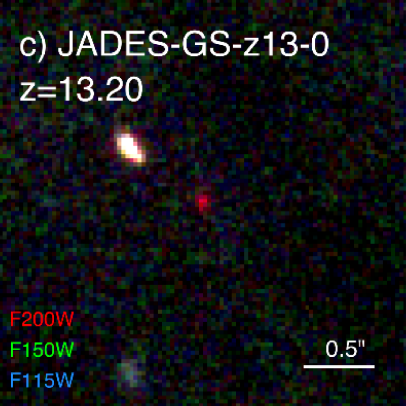|
EGSY8p7
__NOTOC__ EGSY8p7 (EGSY-2008532660) is a distant galaxy in the constellation of Boötes, with a spectroscopic redshift of ''z'' = 8.68 (photometric redshift 8.57), a light travel distance of 13.2 billion light-years from Earth. Therefore, at an age of 13.2 billion years, it is observed as it existed 570 million years after the Big Bang, which occurred 13.8 billion years ago, using the W. M. Keck Observatory. In July 2015, EGSY8p7 was announced as the oldest and most-distant known object, surpassing the previous record holder, EGS-zs8-1, which was determined in May 2015 as the oldest and most distant object. In March 2016, Pascal Oesch, one of the discoverers of EGSY8p7, announced the discovery of GN-z11, an older and more distant galaxy. Detection The light of the EGSY8p7 galaxy appears to have been magnified twofold by gravitational lensing in the light's travel to Earth, enabling the detection of EGSY8p7, which would not have been possible without the magnificatio ... [...More Info...] [...Related Items...] OR: [Wikipedia] [Google] [Baidu] |
GN-z11
GN-z11 is a high-redshift galaxy found in the constellation Ursa Major. It is one of the farthest known galaxies from Earth ever discovered. The 2015 discovery was published in a 2016 paper headed by Pascal Oesch and Gabriel Brammer (Cosmic Dawn Center). Up until the discovery of HD1 in 2022, GN-z11 was the oldest and most distant known galaxy yet identified in the observable universe, having a spectroscopic redshift of , which corresponds to a proper distance of approximately .At first glance, the distance of might seem impossibly far away in a Universe that is only 13.8 billion (short scale) years old, where a light-year is the distance light travels in a year, and where nothing can travel faster than the speed of light. However, because of the expansion of the universe, the distance of 2.66 billion light-years between GN-z11 and the Milky Way at the time when the light was emitted increased by a factor of (z+1)=12.1 to a distance of 32.2 billion light-years during the 13. ... [...More Info...] [...Related Items...] OR: [Wikipedia] [Google] [Baidu] |
List Of The Most Distant Astronomical Objects
This article documents the most distant astronomical objects discovered and verified so far, and the time periods in which they were so classified. For comparisons with the light travel distance of the astronomical objects listed below, the age of the universe since the Big Bang is currently estimated as 13.787±0.020 Gyr. Distances to remote objects, other than those in nearby galaxies, are nearly always inferred by measuring the cosmological redshift of their light. By their nature, very distant objects tend to be very faint, and these distance determinations are difficult and subject to errors. An important distinction is whether the distance is determined via spectroscopy or using a photometric redshift technique. The former is generally both more precise and also more reliable, in the sense that photometric redshifts are more prone to being wrong due to confusion with lower redshift sources that may have unusual spectra. For that reason, a spectroscopic redshift is conventio ... [...More Info...] [...Related Items...] OR: [Wikipedia] [Google] [Baidu] |
EGS-zs8-1
EGS-zs8-1 is a high-redshift Lyman-break galaxy found at the northern constellation of Boötes. In May 2015, EGS-zs8-1 had the highest spectroscopic redshift of any known galaxy, meaning EGS-zs8-1 was the most distant and the oldest galaxy observed. In July 2015, EGS-zs8-1 was surpassed by EGSY8p7 (EGSY-2008532660). Description The redshift of EGS-zs8-1 was measured at z = 7.73, corresponding to a light travel distance of about 13.040 billion light years from Earth, and age of 13.04 billion years. The galaxy shows a high rate of star formation, so it releases its peak radiation at the vacuum ultraviolet part of the electromagnetic spectrum, near the Lyman-alpha emission line due to the intense radiation from newly formed blue stars, hence it is classified as a Lyman-break galaxy; high-redshift starburst galaxies emitting the Lyman-alpha emission line. Because of the cosmological redshift effect caused by the metric expansion of space, the peak light from the galaxy has becom ... [...More Info...] [...Related Items...] OR: [Wikipedia] [Google] [Baidu] |

